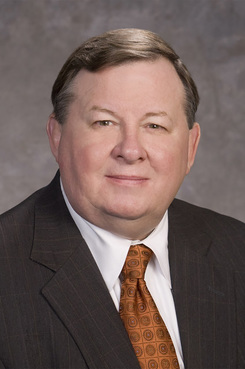How One Law Firm Is Using Behavioral Science to Coax Lawyers to Innovate
Changing lawyers' behavior, it turns out, can be more science than art. Baker Donelson's chief innovation officer is trying a new path.
November 08, 2018 at 12:20 PM
4 minute read
The original version of this story was published on The American Lawyer
 Image credit: Bigstock
Image credit: Bigstock
If you build it, they won't necessarily use it.
That might be a mantra for innovation managers within Big Law who struggle to persuade lawyers to adopt new efficiency-focused tools.
“Innovative isn't innovative if no one is using it,” said William Painter, chief innovation officer at Baker, Donelson, Bearman, Caldwell & Berkowitz. “And that's the challenge: changing attorney behavior.”
To do that, Painter has turned to a field he said he didn't even know existed: Behavioral science. More specifically, he has implemented nudges within Baker Donelson's technology set that are designed to take advantage of insights from B.J. Fogg, a behavioral scientist who founded the Behavior Design Lab at Stanford University.
Fogg has developed a behavior model that says change happens when there is a confluence of three factors: motivation, ability and a prompt. The challenge facing Painter and other innovation managers at law firms is to find lawyers who want to do things differently, ensure they have the ability to do it, and then supply the right prompt to change.
But what does that mean for a law firm?
 William Painter of Baker Donelson.
William Painter of Baker Donelson.Painter, based in the firm's Jackson, Mississippi, office, has gone to great lengths to adapt Fogg's behavior model to lawyers.
Fogg, for instance, asserts that there are three aspects to motivation: sensation (described as pleasure or pain), anticipation (hope and fear) and belonging (rejection or acceptance). Adapting the model for the business of law, Painter sees lawyers as motivated by the pleasure or pain of making more money, the hope and fear of winning or losing clients, and the desire to be accepted and appreciated by the firm's leadership.
Unfortunately for law firm leaders interested in driving change, Painter has concluded that not much can be done by a law firm to affect a lawyer's motivation. Attempting to motivate based on adjusting a compensation system, he said, is “the third rail” of law firm management.
“The fact of the matter is there is very little you can do in a law firm to drive motivation,” Painter said Wednesday at a conference on legal innovation in Boston. “What we can address is ability. How do we make it easier to do?”
In Painter's personal example at Baker Donelson, he said the behavior change he is most interested in driving is implementing smart budgets on more legal matters.
“If you get good at budgets, and if you have the data to get empirical about it, then it's the key to everything,” he said.
Ability to change behavior, he said, is often measured in two ways: time or money. What lawyers lack is the time to do new things, like learning to budget matters or implementing budgeting tools. So Painter said the firm has spent money to make budgeting a seamless part of the lawyers' work.
That meant hiring a team of a dozen legal project managers to help the firm's lawyers budget matters. The firm also implemented brief, 15-minute training segments, and experimented with turning the training into a game setting.
Then there's the matter delivering a prompt. On the front end of client matters, Painter has sprinkled prompts within Baker Donelson's technology system, called BakerManage, which lawyers use to create engagement letters. The process now asks if the lawyer would like to provide a scope statement. The system reminds them that scope statements are particularly important for alternative billing arrangements. The system will also ask if they would like to use BakerManage's project management tools.
“This will trigger language in the engagement letter,” Painter said. “And by the way, once you commit in the engagement letter to do it, you better do it.”
Painter said the firm currently has more than 1,200 matters being managed on budgets through its BakerManage system.
The firm has come up with other prompts, too. Painter said it developed a “strike team” that intercedes when partners are working on client matters that have low profitability. The team will offer ways to redesign legal work processes for lower cost in an effort to make the client relationship more profitable.
“The strike team says, 'You are going to improve, or you and the client are gone,'” Painter said. “And we see improvements in profitability or write-downs, which are a huge issue. That's a prompt that's more like a mandate. But that's OK. I'll go with that.”
This content has been archived. It is available through our partners, LexisNexis® and Bloomberg Law.
To view this content, please continue to their sites.
Not a Lexis Subscriber?
Subscribe Now
Not a Bloomberg Law Subscriber?
Subscribe Now
NOT FOR REPRINT
© 2025 ALM Global, LLC, All Rights Reserved. Request academic re-use from www.copyright.com. All other uses, submit a request to [email protected]. For more information visit Asset & Logo Licensing.
You Might Like
View AllTrending Stories
- 1New York-Based Skadden Team Joins White & Case Group in Mexico City for Citigroup Demerger
- 2No Two Wildfires Alike: Lawyers Take Different Legal Strategies in California
- 3Poop-Themed Dog Toy OK as Parody, but Still Tarnished Jack Daniel’s Brand, Court Says
- 4Meet the New President of NY's Association of Trial Court Jurists
- 5Lawyers' Phones Are Ringing: What Should Employers Do If ICE Raids Their Business?
Who Got The Work
J. Brugh Lower of Gibbons has entered an appearance for industrial equipment supplier Devco Corporation in a pending trademark infringement lawsuit. The suit, accusing the defendant of selling knock-off Graco products, was filed Dec. 18 in New Jersey District Court by Rivkin Radler on behalf of Graco Inc. and Graco Minnesota. The case, assigned to U.S. District Judge Zahid N. Quraishi, is 3:24-cv-11294, Graco Inc. et al v. Devco Corporation.
Who Got The Work
Rebecca Maller-Stein and Kent A. Yalowitz of Arnold & Porter Kaye Scholer have entered their appearances for Hanaco Venture Capital and its executives, Lior Prosor and David Frankel, in a pending securities lawsuit. The action, filed on Dec. 24 in New York Southern District Court by Zell, Aron & Co. on behalf of Goldeneye Advisors, accuses the defendants of negligently and fraudulently managing the plaintiff's $1 million investment. The case, assigned to U.S. District Judge Vernon S. Broderick, is 1:24-cv-09918, Goldeneye Advisors, LLC v. Hanaco Venture Capital, Ltd. et al.
Who Got The Work
Attorneys from A&O Shearman has stepped in as defense counsel for Toronto-Dominion Bank and other defendants in a pending securities class action. The suit, filed Dec. 11 in New York Southern District Court by Bleichmar Fonti & Auld, accuses the defendants of concealing the bank's 'pervasive' deficiencies in regards to its compliance with the Bank Secrecy Act and the quality of its anti-money laundering controls. The case, assigned to U.S. District Judge Arun Subramanian, is 1:24-cv-09445, Gonzalez v. The Toronto-Dominion Bank et al.
Who Got The Work
Crown Castle International, a Pennsylvania company providing shared communications infrastructure, has turned to Luke D. Wolf of Gordon Rees Scully Mansukhani to fend off a pending breach-of-contract lawsuit. The court action, filed Nov. 25 in Michigan Eastern District Court by Hooper Hathaway PC on behalf of The Town Residences LLC, accuses Crown Castle of failing to transfer approximately $30,000 in utility payments from T-Mobile in breach of a roof-top lease and assignment agreement. The case, assigned to U.S. District Judge Susan K. Declercq, is 2:24-cv-13131, The Town Residences LLC v. T-Mobile US, Inc. et al.
Who Got The Work
Wilfred P. Coronato and Daniel M. Schwartz of McCarter & English have stepped in as defense counsel to Electrolux Home Products Inc. in a pending product liability lawsuit. The court action, filed Nov. 26 in New York Eastern District Court by Poulos Lopiccolo PC and Nagel Rice LLP on behalf of David Stern, alleges that the defendant's refrigerators’ drawers and shelving repeatedly break and fall apart within months after purchase. The case, assigned to U.S. District Judge Joan M. Azrack, is 2:24-cv-08204, Stern v. Electrolux Home Products, Inc.
Featured Firms
Law Offices of Gary Martin Hays & Associates, P.C.
(470) 294-1674
Law Offices of Mark E. Salomone
(857) 444-6468
Smith & Hassler
(713) 739-1250






